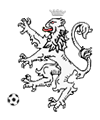
Subscription required
You must have a subscription to access this article.
From Piendibene to Petrone — the evolution of the centre-forward in Uruguay
Author: Isaque Argolo | Creation Date: 2022-04-11 18:49:39
Document classification: PRIVATE ARTICLE.
